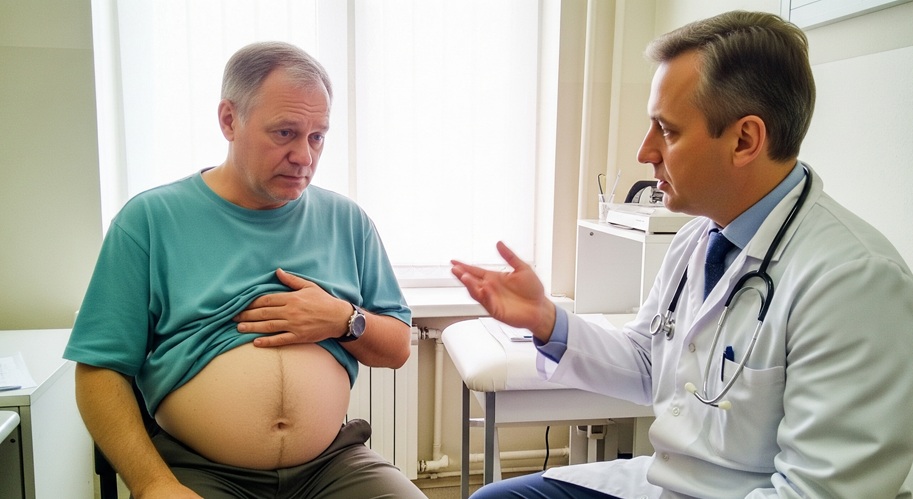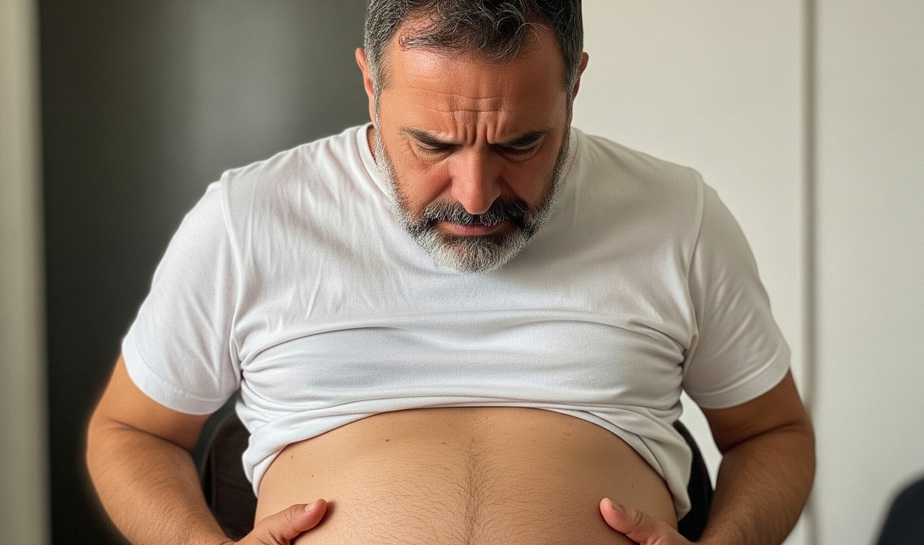Let’s talk about something a lot of people would rather just sweep under the rug: FUPA. For many, it’s that one stubborn area they’ve tried to tone, hide, or just ignore. But it keeps coming back in the mirror or under snug clothes.
So what is FUPA? It means Fat Upper Pubic Area, and it refers to that soft, sometimes bulging area just above the pubic bone and below the belly button. The FUPA is specifically over the mons pubis and lower abdomen.
A little fat in this region is completely normal, as it helps cushion and protect the pelvic bone. But factors like pregnancy, hormonal shifts, aging, or even significant weight changes can cause FUPA to grow over time. That’s when wearing a swimsuit, yoga pants or fitted dresses becomes an issue. And it shouldn’t.
Now, “FUPA” might sound a little cheeky (or even a bit harsh), but we use it here for clarity. Just know that we cosmetic surgeons call it the panniculus.
At True Contour Medical, we’re here to take the pressure off. In this guide, we’ll walk you through what causes a FUPA, how diet and exercise might help, and when it’s time to consider expert body sculpting options like pubic liposuction to finally say goodbye to FUPA for good.
What Causes a FUPA?
Even though you mostly hear about FUPA in women, men deal with it too. There’s a certain level of taboo around this topic. We don’t really talk about the Fat Upper Pubic Area, and we really should. Let’s start with what causes it and why it’s so common.
Once we break it down, you’ll start to see why this stubborn fat pocket tends to affect female patients more often. But don’t worry, we’ll get into the causes for men too.
After Childbirth
FUPA can often show up after childbirth, and for many women, it becomes a major source of stress. The body goes through so much—stretching, hormone shifts, weight changes. And after delivery, skin laxity becomes a real concern, especially around the lower belly and mons pubis.
With everything going on, including the physical and emotional toll, that lingering bulge can feel overwhelming. We often hear patients say, “I just want to feel like myself again.”
Many new moms want to feel strong and beautiful in their bodies again. And they are, always have been, always will be. But we understand that a post-pregnancy FUPA can feel like a real struggle.
Hormonal Imbalances Associated with Menopause
Another common cause of FUPA in women is hormone-related. As estrogen levels shift—especially during perimenopause and menopause—fat tends to redistribute, often settling in the hips, lower abdomen, and pubic area.
That’s how menopause becomes a key factor in FUPA development.
This stage of life brings a lot with it: mood swings, stress, poor sleep, slower metabolism. And yes, that lower belly fat seems to hang on tighter than ever. But with the right support—and a targeted FUPA treatment plan—it’s absolutely manageable.
Significant Weight Changes
Now let’s talk about one of the most common causes of FUPA in both women and men: major weight changes. And yes, that includes both weight gain and weight loss. I know it sounds contradictory, but let me explain.
When someone gains weight, the lower abdomen is one of the first places the body stores fat, including the pubic area. That can lead to a more prominent FUPA.
But here is what causes FUPA on the flip side: After significant weight loss, you might be left with loose skin and residual fat in that area, making it look even more noticeable.
So whether the scale goes up or down, that persistent bulge can still stick around. And it’s often the last to leave.
Aging & Genetics
Some things are just written into your DNA, and FUPA can be one of them. Genetics plays a big role in where your body stores fat. For many people, that includes the lower belly and pelvic region.
As we age, the body naturally redistributes fat. Muscle tone drops, hormones shift, and energy levels dip. All of that quietly contributes to FUPA, even if your lifestyle hasn’t changed all that much.
After a Tummy Tuck
Some may be surprised here, but it’s true: you can still have a FUPA after a tummy tuck. Why? Because most tummy tucks focus on the upper and mid-abdomen, not the lower pubic area.
And here’s something we take seriously at True Contour Medical: communication. Many patients come to us after having a tummy tuck done in another clinic, where no one explained that it usually doesn’t include mons liposuction or lower pubic sculpting. So, their abs might look amazing, but that bulge remains.
FUPA after a tummy tuck is something we treat often. We solve it with precision, expertise, and the right combination of advanced techniques.
So if a tummy tuck doesn’t address FUPA… what does?
Let’s talk about diet, exercise, and when it might be time to consider a more targeted solution, like PAL lipo for FUPA.
Can You Lose FUPA Naturally?

If you’ve ever searched how to get rid of FUPA, you’ve probably come across a flood of diet plans and exercise routines. It’s really a mixed bag out there.
It’s great that you’re researching how to stay healthy and fit. Just make sure you’re getting your info from the right sources: licensed health professionals, dietitians, or fitness coaches with real experience and a track record of results.
I always recommend looking for science-backed guidance. For instance, Verywell Health has a solid article on weight loss diets. It’s not specific to FUPA, because there is no specific diet for it. But still, the principles can help reduce overall body fat, including the lower belly and mons pubis area.
When it comes to your plate, keep it simple and structured. Think in thirds: proteins, carbs, and veggies.
- Proteins: Chicken breast, lean beef, turkey, white fish, beans, quinoa, or lentils.
- Veggies: Lettuce, tomatoes, broccoli, bell peppers, asparagus—basically, the more colorful, the better.
- Carbs: Fingerling potatoes, red potatoes, brown rice, white rice, oats or oatmeal.
- Drinks: Water is always king. Green tea and herbal teas are great too.
And what about exercises for FUPA? A similar thing as we saw with diet: exercise can’t help you lose fat in really targeted areas. But working out is always a good idea, and it certainly can help you reduce your belly fat.
Healthline has published a great list of exercises that can support FUPA reduction. These include core and lower-body movements like bicycle crunches, leg raises, roll-ups and reverse crunches.
Also, moves like squat-to-knee drive, reverse lunge to front kick, mountain climbers, and step-back burpees are excellent for burning fat and building muscle. So if you are looking for dynamic exercises, ideal for busy days, check out this great HIIT routine.
But here’s what I tell all my patients: there’s no such thing as spot reduction. No matter how many crunches or squats you do, you can’t target fat loss in one specific area with exercise alone. That’s why it’s not your fault if the FUPA isn’t going anywhere despite your best efforts.
And it’s definitely not about starving yourself or surviving on lettuce and lemon water.
If you want an expert cosmetic surgeon’s take: liposuction works because it does what diet and exercise can’t.
FUPA Treatments That Work
So, why is liposuction such an effective treatment for FUPA?
It’s right there in the definition: liposuction is targeted fat removal. That means it directly removes fat cells from a specific area. In this case, the Fat Upper Pubic Area.
Yes, liposuction is a surgical procedure. But it’s minimally invasive, done under local anesthesia. In fact, patients are fully awake and comfortable the entire time.
Here’s how liposuction for FUPA works:
We make two tiny incisions—about 2mm—around the mons pubis. Through these, we insert a thin cannula to gently break up and suction out the fat from the pubic area. It’s a precise, sculpted removal that helps flatten and contour the lower belly and pelvic zone.
There are several types of liposuction out there, but for this area, we recommend PAL: Power-Assisted Liposuction. It’s a high-precision technique, ideal for treating smaller, delicate areas like the mons pubis.
At True Contour, we perform HD PAL liposuction using the Vibrasat® Pro by Möller Medical. This advanced device uses gentle vibration at the tip of the cannula, making fat removal more efficient and far less traumatic to surrounding tissue. The result? Less swelling, better sculpting, and a smoother recovery.
What About Loose Skin? Removing fat from the FUPA is only part of the picture. What if the skin doesn’t snap back the way you want?
I have three words for you: Renuvion – Rejuvenecimiento de Piel. This is a non-surgical treatment we often pair with pubic liposuction to help contract and tighten the skin after fat removal. It’s especially helpful for patients with skin laxity after childbirth or major weight loss.
After liposuction for FUPA, here’s what to expect: you’ll wear a compression garment to help minimize swelling and support healing in the lower belly area. Most patients are back to light daily activities within just a few days, and many return to their usual routine in about a week.
After that, full recovery generally takes about 6 to 8 weeks. Of course, every body is different. The mons area can swell a bit more than other zones, and that’s totally normal.
That’s why we guide every patient through a personalized aftercare plan, tailored to their body and healing process—so you feel supported every step of the way.
Why True Contour Medical is the Right Choice
At True Contour, we combine expert hands with the latest technology in body sculpting. With over 2,000 liposuction procedures performed, we’ve built our reputation on results—and on the way we care for our patients before, during, and after surgery.
When it comes to FUPA removal surgery, one of the most important steps is actually the first one: your consultation.
This is your one-on-one time to talk directly with me—Dr. G MD. And just to be clear about how consultations work here: what you share in our office stays in our office. It’s private. It’s personal. And we take that seriously.
Just like we say when talking about thigh liposuction for women, we take the time to listen. We walk every patient through their treatment options, expectations, and aftercare. You’ll never feel rushed, judged, or brushed off.
We’ve helped patients with FUPA from all walks of life. New moms who just want to feel like themselves again. They deserve to feel great in their bodies, and we’re here to help make that happen.
We’ve also treated men and women in their 50s and 60s. We are talking about healthy, active people, who were still stuck with FUPA. We understood their frustration, and we helped them.
How to Get Rid of FUPA (For Real)
If you’re still here, chances are you’ve tried the workouts. You’ve cleaned up your diet. And yet,that lower belly bulge won’t go away.
That’s exactly what we help with here at True Contour Medical: a targeted FUPA liposuction that’s effective, precise, and tailored to your body.All you have to do is what so many of our patients have already done: schedule a consultation, and let’s talk about solving this with expert cosmetic care.
